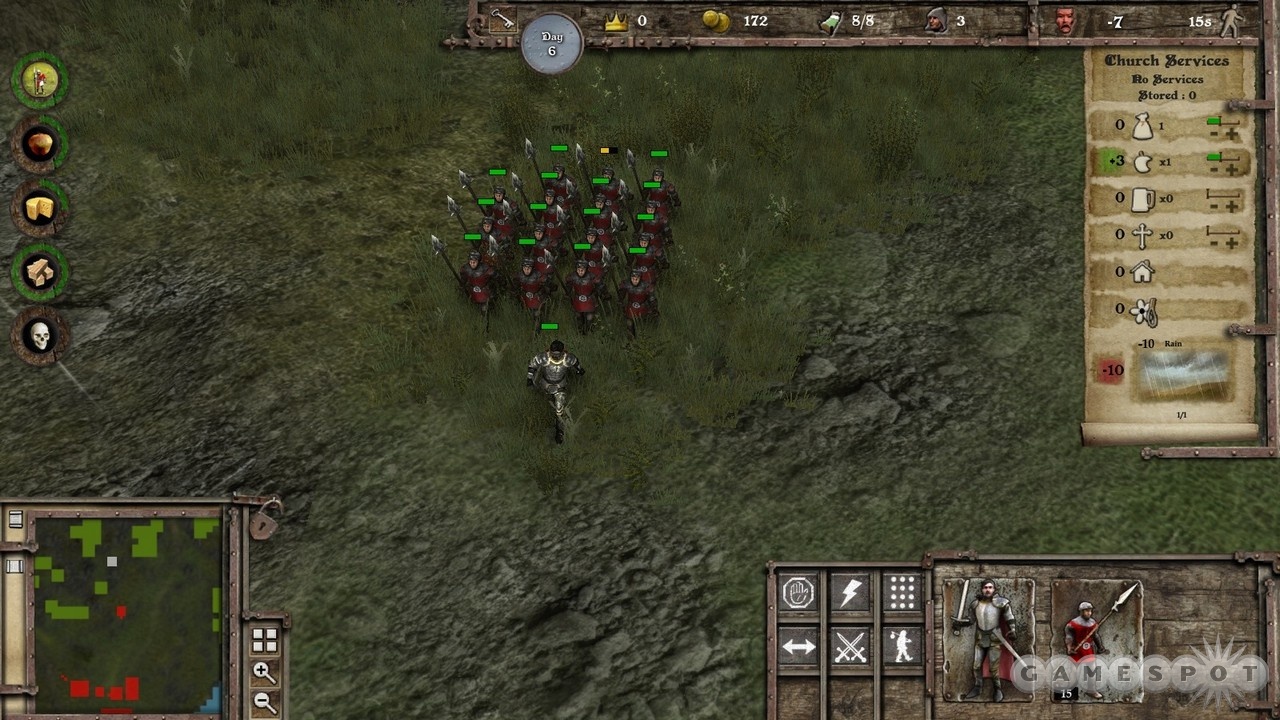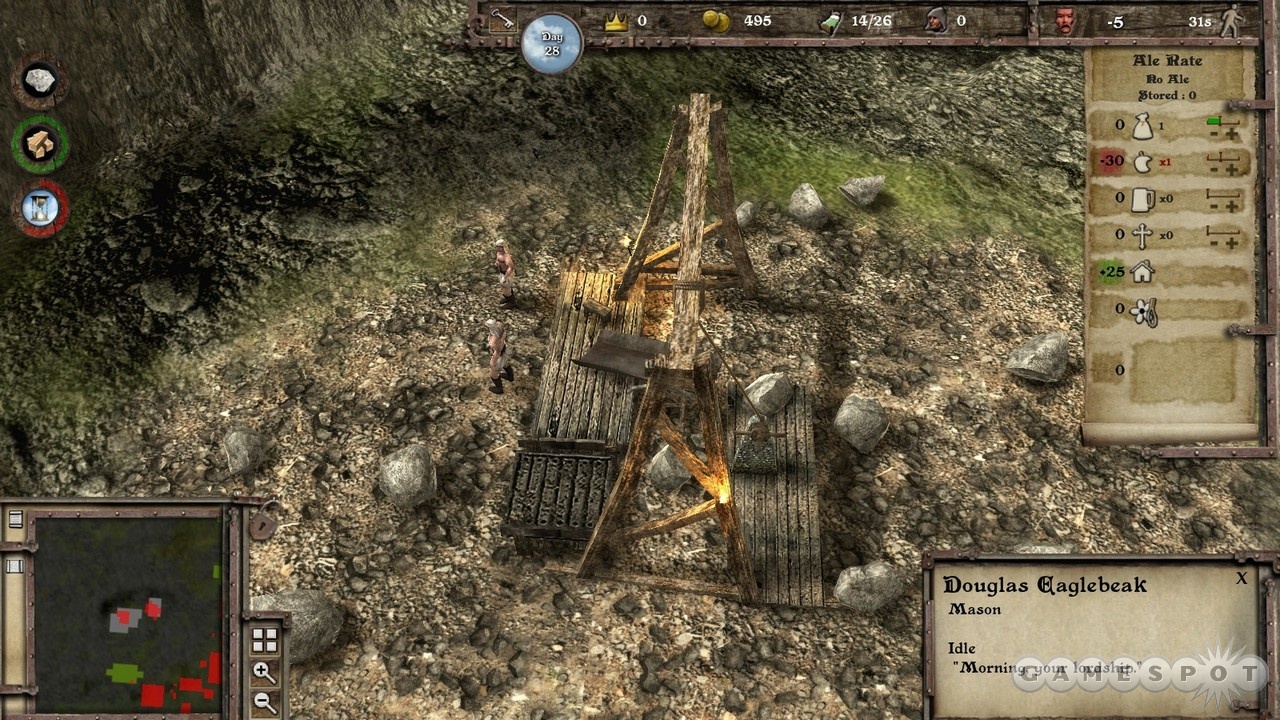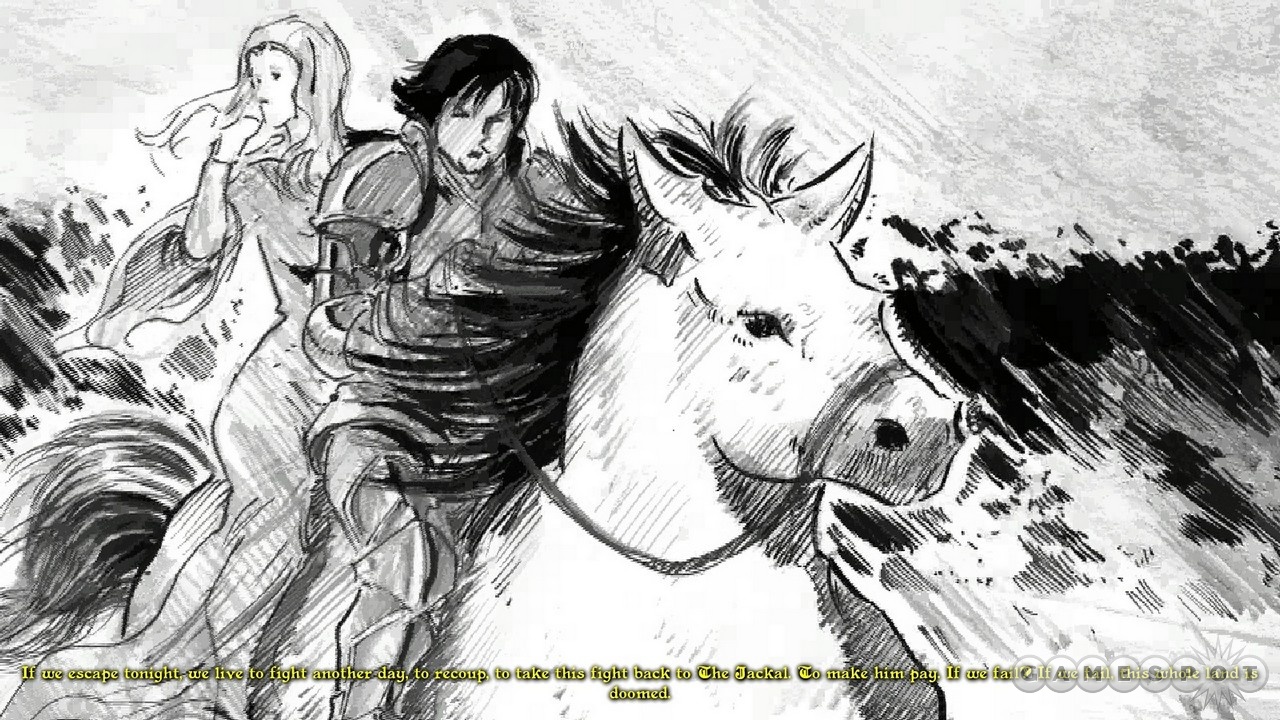Noted poet Thomas Earl Petty once told us that the waiting is the hardest part, a lesson that is painfully taught once again in Stronghold 3. The Firefly Studios game of medieval micromanagement may have been a long time coming, since Stronghold 2 was released back in 2005, but despite the years since and the opportunity to do something different, Stronghold 3 sticks close to its predecessor's template, offering up more slow-moving gameplay that sees you doing more waiting and watching than constructing a Middle Ages empire. What could have been a good city builder has been buried under this design flaw, not to mention other serious issues with bugs, mission repetition, a tutorial that doesn't do much tutoring, and simplistic combat.

Like its predecessors, Stronghold 3 is a real-time strategy game where you play as a lord attempting to build a happy little hamlet in the Middle Ages. It's all about the peasants, who need to be lured in with things like fair tax rates and then kept happy with jobs gathering and processing resources, reasonably plentiful food like apples and bread, and a half-decent standard of living without too much plague killing everybody off and blighting crops. The basic structure of the game mirrors traditional city builders going right back to the Caesar and Pharaoh franchises that developer Impressions created back in the '90s. The story recalls the original Stronghold, with the game picking up the tale of a boy battling traitors to seek revenge for the overthrow of his father, the previous king. Apparently impalement did not rid the world of the archvillain, the Wolf, at the end of the first game in the franchise, so he returns a decade later looking to even the score.
The modes of play have been broken up into two semi-linked single-player campaigns, one that focuses primarily on the economy in getting a kingdom rolling again (although you do have to battle a few menaces) and a more military-centered one that places war against the Wolf and his troops on the front burner, while still forcing you to keep the economy rolling back at home. Historical one-off scenarios are also on offer, featuring a handful of brutally unfair (and quick) castle sieges where you take on spectacular numbers of enemy troops whether you are attacking or defending. Free Build is a sandbox option where you build the medieval shantytown of your dreams without any goals or guidelines. Deathmatch and King of the Hill multiplayer games are available as well, although nobody seems to be playing online, and the game currently lacks popular options from previous Stronghold games, such as Kingmaker and Skirmish.

Gameplay is problematic across the board. For starters, bugs show up early and often. The game seems to have a serious problem with graphics-switching hardware on laptops. It refused to start on our test Dell system with both onboard visuals and a high-powered video card that more than matched the system requirements, providing nothing but a "Failed to initialize the engine" error on every launch attempt. Only manually adding a command to a config file got the game running, and then only in a window that occasionally started up with a mouse cursor issue that made it impossible to accurately point at anything. Crashes also take place on a regular basis. The game has a habit of fainting to the desktop out of the blue, particularly after you have been playing a mission for a considerable amount of time (save early, save often). All of these problems come with little in the way of reward. Nothing pushes the envelope when it comes to graphics or sound. Visuals are muddy and bland, with few details on the constricted maps. Story cutscenes are dressed up with black-and-white drawings that look more like rough storyboards than finished artwork. Sound is unmemorable save for a striking musical score that includes minstrel odes with a singer who comes off a bit like '70s-era Gordon Lightfoot. These tunes will linger long after you've forgotten the game.
Even when Stronghold 3 runs properly, it doesn't run well. The first problem you encounter is the lack of a thorough tutorial. While there is an interactive tutorial, it stops abruptly after just a few minutes, leaving virtually all of the game's core features and building functions completely unexplained. As a result, you go into the campaigns with no knowledge of how the game's economics function. So you often need to call up the in-game help for advice on why stone quarries aren't functioning or how to deal with pesky apple crop blight. Granted, there isn't anything completely out of left field, but some tips would be much appreciated, especially regarding the production line for resources. Because there are multiple steps for everything--making bread, for instance, requires a stop at a farm, storehouse, windmill, bakery, and granary--you need some help, especially when it comes to keeping all of your buildings close together to avoid lengthy production delays.
Still, scenarios run slowly even when you maximize production speed. You wait, wait, and wait some more whenever gathering and processing resources. This was a huge problem immediately upon release, because the game was launched without any way to fast-forward past those inevitable dull spots where you're stockpiling resources. The ability to adjust speed was patched in well after the game hit shelves, but this handy feature was added without any change to the user interface. So even though you can hit the + and - keys to speed up and slow down the action, you might not realize this is possible unless you read the patch notes.

Regardless, the gameplay remains problematic. Fast-forwarding comes with its own set of concerns. You might crank the game speed up to expedite some stone gathering back at the base, for instance, but wind up losing the ability to handle combat elsewhere on the map. What seems a good pace for working in the quarry is not nearly as handy when battling packs of wolves or enemy troops, because combat accelerates out of control. Battles turn into such a blur that you can accidentally lose a whole squad or even get your lord killed in the blink of an eye. So you have to be cautious when hitting that + key. In the end, you can't speed things up as much as you would like, so you often wind up stuck on the sluggish default speed and spend more time watching animations of things like wood being chopped in forests, stone being hauled out of quarries, and bread being trotted out of the bakery than you do building your medieval empire. Peasants also amble everywhere when not being fast-forwarded. They never seem to run, even when ordered to take on urgent tasks. Zooming in on peasants at work is incredibly frustrating, because they appear to do little but sit around or aimlessly shuffle back and forth.
Mission design is predictable and repetitive. You do pretty much the same things over and over, and there are no random variables to add in replay value. Finish one mission loaded with building storehouses, granaries, watchtowers, and hovels, and all you do is earn the right to start another mission filled with building the same structures. Goals vary somewhat, but they stick mainly to victory conditions that involve stockpiling set amounts of wood, stone, and wine; killing off enemies; holding out against an enemy assault; and so forth. Map size is a contributing problem. The maps are tiny, leaving you little room for exploration or innovation, which limits your options when it comes to trying anything offbeat. So in addition to constructing the same buildings on every map, you're going through these motions among what might as well be the same small patch of turf.
Warfare isn't satisfying either, for mostly the same reasons. Battles don't have a great deal of depth. You can outfit soldiers with different types of weaponry, making for combined-arms assault troops that work as spearmen, bowmen, and the like, but actual combat comes down to little more than band-selecting masses of troops to hurl them at the enemy castles or lines and then hoping for the best. Foes seem quite overpowered, too, to the point where what should be minor nuisances become scenario-killing monsters. A few wolves can decimate your forces and bring all of your village building to a halt. Dealing with enemy forces is even more daunting, especially on siege maps and in the historical castle missions. They always seem to be both more powerful and more numerous than any troops you can put into the field. As a result, battles seem unfair, and emerging victorious always comes at the end of a long, drawn-out war of attrition that bores you well before it wraps up.

Even though Firefly Studios took the better part of a decade to release Stronghold 3, the developer really needed to work on this one for a fair bit longer. Patches continue to be released in an attempt to improve the game's flaws, however, resulting in improvements to things like game speed and the addition of multiple difficulty settings to address complaints over the tough nature of the scenarios. Still, even with the ongoing work, the game remains afflicted by some serious bugs, a dawdling pace, and a tutorial that does virtually nothing to teach the ins and outs of building a medieval village. At present, it is pretty tough to recommend this trip back to the Middle Ages.